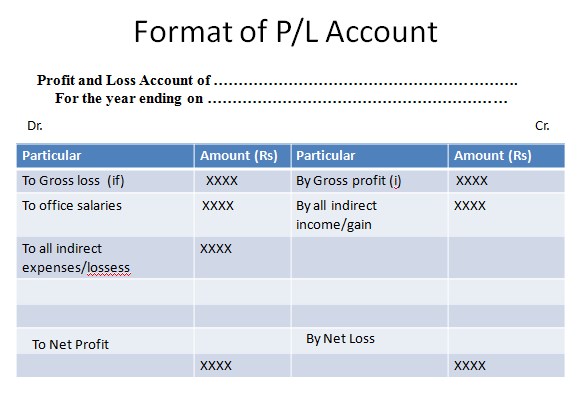Government Accounting System || Development of Government Accounting System
Government Accounting System
The accounting system followed by government offices to keep the record of all the financial transaction is known as government accounting system. It is basically related to record the revenue (incomes) and expenditures of ministries, departments, operating level offices and other legal bodies of the government.
Difference between Government Accounting and Commercial Accounting:
| S.No | Government Accounting | Commercial Accounting |
| 1 | It is used by government offices. | It is used by private or public business organizations. |
| 2 | It is based on the government rules and regulations. | It is fully based on the generally accepted accounting principles (GAAP). |
| 3 | It is control by budget. | It is not control by budget. |
| 4 | It is audited by the office of auditor general. | It is audited by the professional auditors. |
| 5 | Accounts are maintained under budget head numbers. | No budget heads are classified under this accounting. |
Development of Government Accounting System
Government accounting in Nepal can be traced back to the Lichhavi period. It was first introduced in Nepal in Lichhavi period
to record the revenues and expenditure of the government. In Lichhavi period, there was a certain form of accounting to record
financial transactions. In this period government revenues were collected from trust, tax, and custom duty and expenditures were
made for war, renovation and construction of temples. When the trade and industry further developed in the Malla period, the sources
of government revenue were increased. The revenues were collected from trust, tax, custom and trade. The expenditures were made for
war, renovation and construction of temples. The accounting system remained in the same state as in the Lichhavi period. When the
number of financial transactions increased in Shah Period, it was necessary to originate the systematic accounting system. As a result,
in 1871 B.S, a book called Laldhadda was introduced to record revenues and administrative expenses of the government. In 1879, another
book of accounts was introduced for recording details about land and its revenues. These two books of accounts were the important steps
in the history of accounting in Nepal. After a long gap, an office Kitabkhana was established in 1925 B.S. for recording the salary paid
to the employees of government offices, which is still in practice. In 1936 B.S, an important contribution made by Kharidar Gunawanta,
a senior professional who propounded Syaha Sresta Pranali which was used to present a real picture of government revenues and expenditures.
After the restoration of democracy in 2007 B.S., the government became more responsible towards the people and financial administration.
As a result, the budgeting system was started in 2008 B.S. Under the constitution of 2015 B. S. of Nepal, on 2016 Ashadh 16, the
Auditor General was appointed as the constitutional body. In Nepalese context, in the past, there were no many financial transactions
and government was not accountable towards the people to show the position of public funds.Government accounting in Nepal can be traced
back to the Lichhavi period. It was first introduced in Nepal in Lichhavi period to record the revenues and expenditure of the government.
In Lichhavi period, there was a certain form of accounting to record financial transactions. In this period government revenues were collected
from trust, tax, and custom duty and expenditures were made for war, renovation and construction of temples. When the trade and industry further
developed in the Malla period, the sources of government revenue were increased. The revenues were collected from trust, tax, custom and trade.
The expenditures were made for war, renovation and construction of temples. The accounting system remained in the same state as in the Lichhavi period.
When the number of financial transactions increased in Shah Period, it was necessary to originate the systematic accounting system.
As a result, in 1871 B.S, a book called Laldhadda was introduced to record revenues and administrative expenses of the government.
In 1879, another book of accounts was introduced for recording details about land and its revenues. These two books of accounts were the
important steps in the history of accounting in Nepal.
After a long gap, an office Kitabkhana was established in 1925 B.S. for recording the salary paid to the employees of government of offices,
which is still in practice. In 1936 B.S, an important contribution made by Kharidar Gunawanta, a senior professional who propounded Syaha Sresta
Pranali which was used to present a real picture of government revenues and expenditures.After the restoration of democracy in 2007 B.S.,
the government became more responsible towards the people and financial administration. As a result, the budgeting system was started in 2008 B.S.
Under the constitution of 2015 B. S. of Nepal, on 2016 Ashadh 16, the Auditor General was appointed as a constitutional body.
The main objective of appointment of the Auditor General was to maintain systematic accounting and avoid frauds and misappropriation of government fund.
To maintain the uniformity in financial administration Procedural rule for government fund expenditure 2016 was passed and enacted in 2016 B.S.
As a result, Bhuktani Sresta Pranali was introduced in 2017 B.S. Bhuktani Sresta Pranali also become unsuitable and unable to maintain the systematic
record of revenues and expenditures of government offices. As a result the new accounting system based on double entry book keeping system was
introduced in 2018 B.S. It has systematic and scientific system that has been followed by the government of Nepal since the fiscal year 2019/20 B.S
and it is still in practice in Nepalese government offices.
Types of Accounting System used in Nepal
1.Wasil Banki Sresta Pranali:
Wasil Banki Sresta Pranali was a simple statement based on single entry system, which was used to record revenues and expenditures of government offices.
It was used to record incomes in one page and expenditures in other page. The accounts were closed at the end of the fiscal year or after the completion
of the job. This system was unscientific and impracticable because financial transactions were not classified and analyzed into different heads.
2.Syaha Sresta Pranali:
In the process of historical development of government accounting system in Nepal, Syaha Sresta Pranali was introduced by Kharidar Gunwanta in 1936 B.S.
It was in practice up to 2022/023 B.S. This system was more scientific than Wasil Banki Sresta Pranali. Various types of books, which were used under
Syaha Sresta Pranali, are as follows:
a. Syaha:
Syaha was the primary record of financial transactions like journal voucher. It was used as the first step Syaha Sresta Pranali to record the incomes
and expenditures of government offices. Syaha was prepared in a shape by providing a number of columns for incomes and expenditures. A leaf was folded
into different creases according to the requirement. It was divided into two parts. The right hand side was used to record expenditures and left hand
side was used to record incomes. Nagadi, Jinsi and Dharauti Syaha were used in practice.
b. Awarje:
Awarje was familiar to the ledger. It was to keep the record of financial transactions in a classified manner according to the heads of income and expenditures.
It facilitated to accumulate the similar nature of transactions under a single heading.
c. Dhapot:
Dhapot was a final statement, which was used to report revenues and expenses in summary form to present the real position of the public fund
on a given date. It was similar to the balance sheet.
4. Form Sresta Pranali:
When the number of financial transactions of the government offices became voluminous, Syaha Sresta Pranali became unable to fulfill the requirement.
As a result, Form Sresta Pranali was introduced in 1968 BS specially to record the land revenue of Terai and city area of Kingdom of Nepal.
Different types of 51 forms were used in practice to record the financial transactions and hence it was called Form Sresta Pranali.
5. Bhuktani Sresta Pranali:
Bhuktani Sresta Pranali was developed in 2017 B.S. to maintain the systematic record of revenues and expenditure of government offices according
to the budget heads. It was based on double entry book keeping system, which classified the government offices into the central level and
operating level for systematic recording of public.













